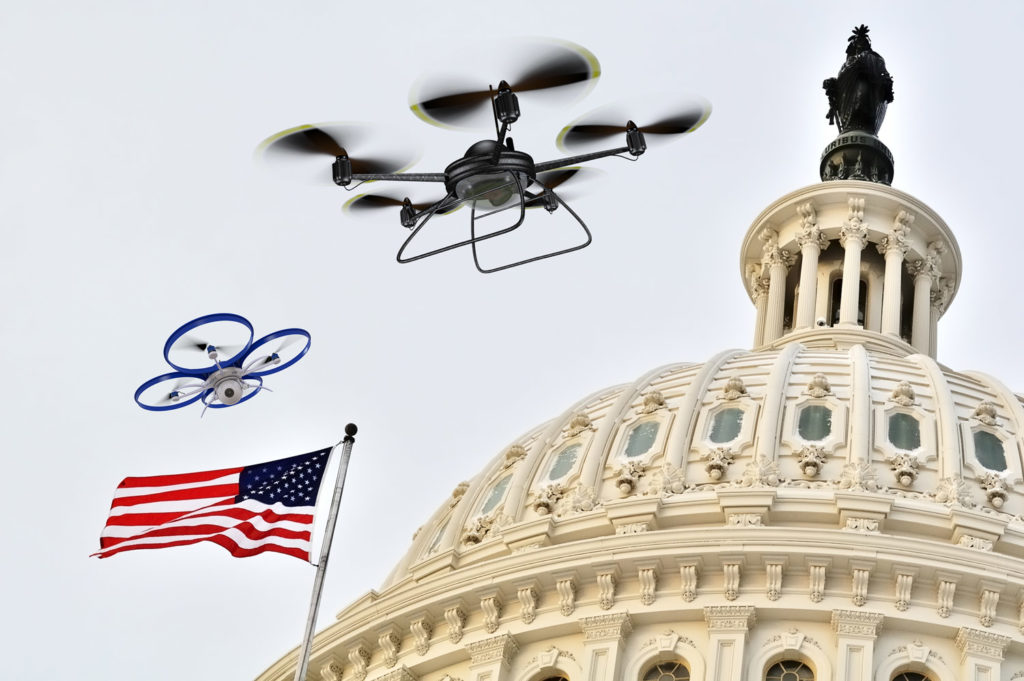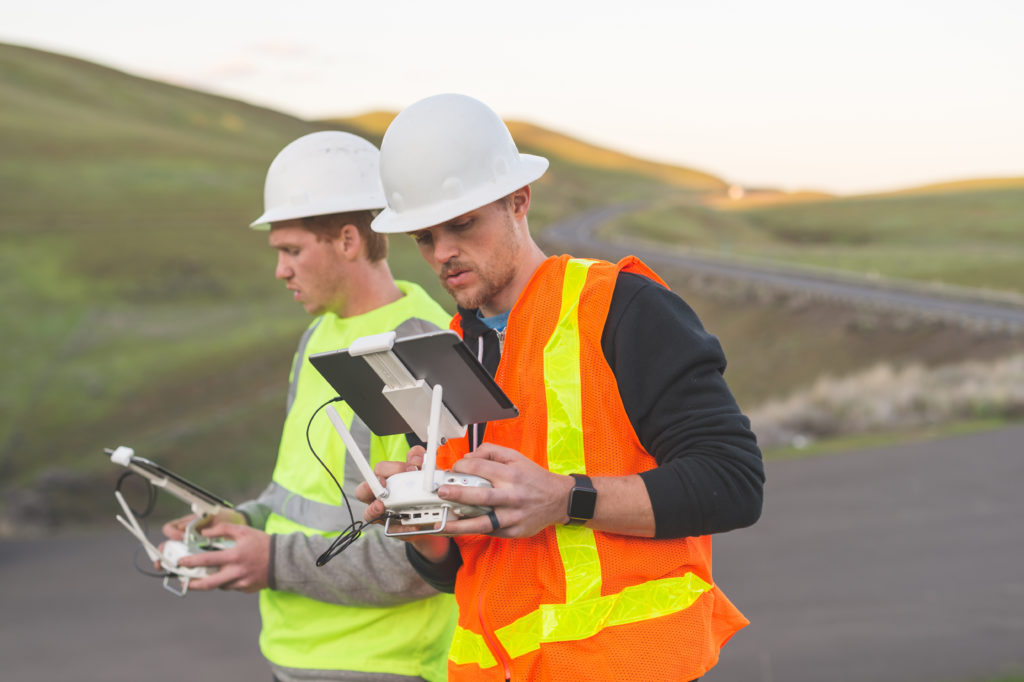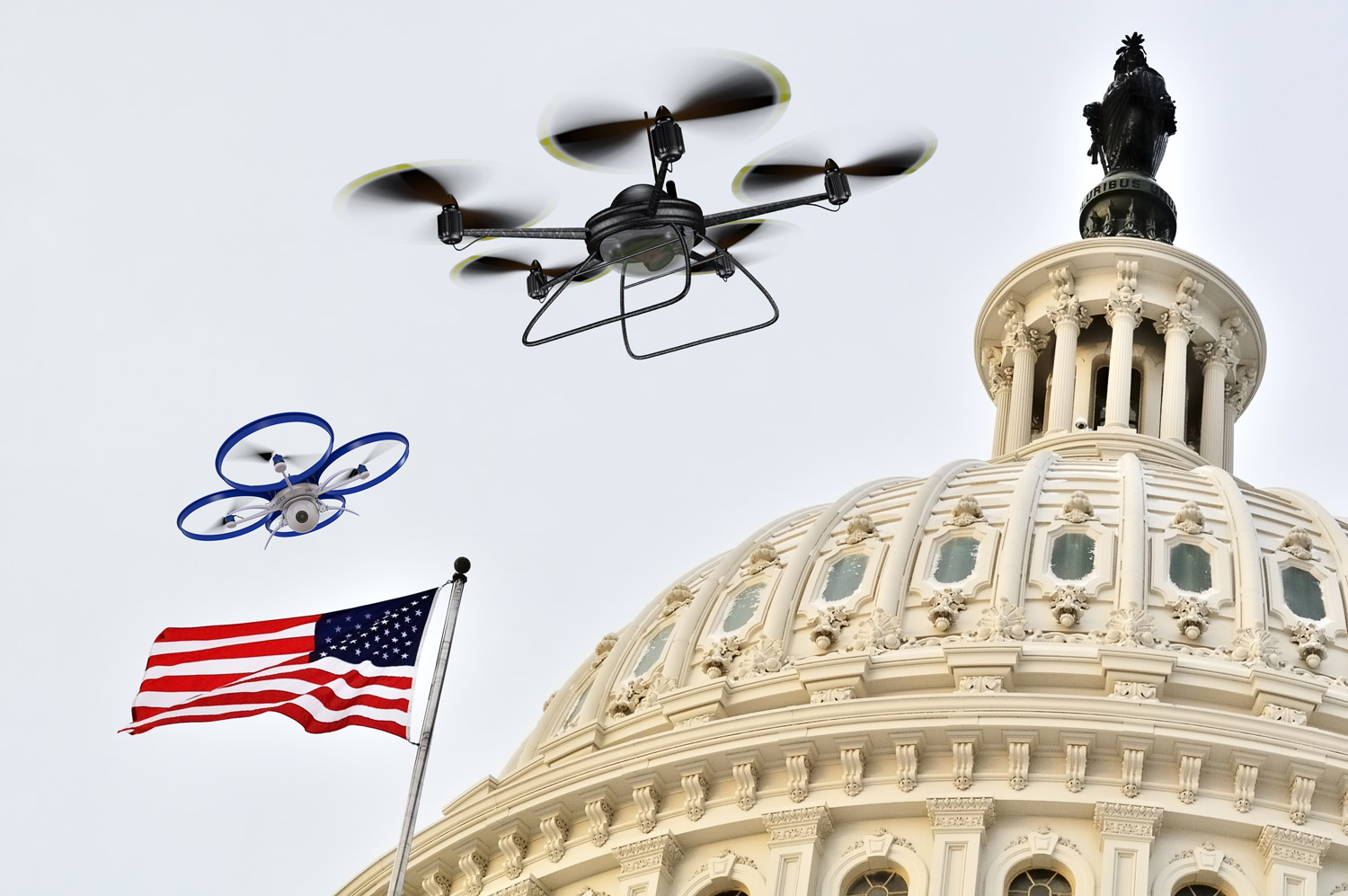As of March 2021, the FAA reports there are over 371,000 commercial drones registered in the US, and over 220,000 certified remote pilots. All signs are pointing to a continued rapid rise in the coming years for unmanned aerial systems. Which is great! This does mean further certification process changes are likely to occur.
Recognizing that a growing and diverse group of companies and people are adding UAS solutions into their operations, the FAA notified the public in February 2020 that they will begin accepting applications for type certification of certain classes of UAS, along with their engines and propellers. The policy went into effect in September 2020, and as of January 2021 there are over a dozen such applications published in the Federal Register.
Type certification promises to accelerate the timeline for integrating UAS operations in the marketplace. It’s an important component of the FAA’s regulatory framework, and the standards that emerge from the process will have a lasting impact on the UAS industry and help clarify the government’s priorities for the future of the national airspace.

Type Certification
Type in type certification refers to either the vehicle’s model or the vehicle’s engine or propellor. These certificates confirm the manufacturer is taking the necessary steps to ensure its products comply with FAA regulations. Without a type certification, a manufacturer must subject EACH of its aircraft or aircraft components to testing and FAA approval, even if they are identical.
These certificates have become an important component of how the FAA ensures the safe design, construction, operation, and maintenance of aircraft entering the National Airspace System (NAS). The FAA and its predecessors have used type certification for more than 90 years for manned aircraft and aircraft components. The continued maturation of UAS technologies motivated Congress to authorize a process for unmanned aircraft type certification under Section 345 of the 2018 FAA Reauthorization Act.
Among the industries positioned to benefit from type certification are those using UAS for package delivery, agriculture, infrastructure surveillance, and for-hire movement of goods, but not people. The existing applicants for UAS type certification range from multinational corporations to emerging startups. The UAS these applicants submitted for FAA review are primarily for package and medical supply delivery but range widely in size, weight, design, and propulsion method.
How Type Certification Fits in the FAA’s Regulatory Framework
Congress authorized the FAA to issue type certificates and create standards for their issuance under 49 U.S.C. 44701(a) and 44704, with vehicle or feature-specific requirements defined in 14 CFR parts 23-35. However, these rules and regulations were drafted with certain assumptions of an aircraft’s appearance and operation that do not apply to UAS. For example, many of these standards presume the possibility of direct human intervention from within the aircraft.
Unsurprisingly, the novel designs and operating features of UAS do not fit into any of the existing categories of aerial vehicles for type certification. Instead, UAS are categorized as a special class under 14 CFR part 21. Part 21 provides the FAA with flexibility to tailor the certification basis for UAS, including incorporating aspects of existing airworthiness standards for aircraft and other products (parts 23-35) while applying entirely novel, UAS-specific requirements. Type certification will not be required for all types of UAS. However, for UAS that weigh over 55 pounds or are designed to engage in operations not permitted under 14 CFR part 107, type certification can be advantageous.
To account for the diversity of UAS applications and the pace of innovation, where possible, the FAA is defining performance-based safety outcomes rather than the prescriptive technical approach sometimes used for manned aircraft. Determining the appropriate level of review and burden of proof to apply for different UAS is a critical early challenge for the FAA. The FAA tries to adjust the demands and rigor for each type certificate based on the proposed operation’s complexity and the safety risks posed. However, access to information necessary for processing such UAS applications may be limited, particularly considering the industry’s rapid evolution.
For example, the process for type certifying passenger aircraft involves extremely detailed requirements. It can span years, cost millions of dollars, and require thousands of hours of flight testing to prove compliance. This level of detail is likely inappropriate for UAS that do not transport people. Nonetheless, the FAA has not offered a timeline for granting type certificates; in the agency’s September 2020 Notice of Policy, they responded to questions about certification timelines and comments advocating for a more rapid process by noting, “The certification timeline for each project will vary significantly depending on the project details, scope, and complexity. Due to these many variables, the FAA is unable to publish a timeline specific to the type certification of UAS that would be widely applicable.”
How Manufacturers Receive Type Certification
As the UAS industry “got off the ground,” additional rules and guidance became necessary to inform stakeholders’ operations and facilitate scaling. The rigor, transparency, and consensus building required to grant type certificates provide the industry with guidance while also producing safer and more reliable outcomes and building trust with the public. Additionally, once type certified, a manufacturer can mass-produce that model and receive streamlined processing for a standard airworthiness certificate. Both certifications are prerequisites to receiving the much sought-after 14 CFR part 135 certification under which the FAA permits operators to use UAS for a wide range of commercial activities, including package delivery.
The FAA identified five phases to the certification process, each with its own set of required filings and testing requirements: (1) conceptual design, (2) requirements definition, (3) compliance planning, (4) implementation, and (5) post-certification activities.
Early phases require applicants to submit details of the product to be type certified, including design specifications, intended use, and proposed area of operations. The FAA uses a safety-first approach in evaluating each submission through its four-component Safety Management System (SMS). As part of this rigorous process, the FAA identifies hazards associated with each proposed UAS function. For each hazard, the agency determines the necessary controls or mitigation steps to ensure the UAS’ safe operations, including customized airworthiness requirements or operational limitations. Once the FAA determines an initial set of airworthiness criteria, it publishes its requirements for each applicant in a public notice, enabling the public to comment on the prescribed standards and operational requirements for one month. The FAA must respond to substantive public comments before finalizing an applicant’s tailored certification basis.
While not every part of the SMS process is made public, the published notices lend insight into the FAA’s approach to UAS type certification. Notably, the airworthiness criteria and additional standards have been grouped into three categories. The first addresses the component’s design and construction, assigning prescriptive or performance-based standards for the UAS’ hardware, software, and operations. The second category provides for certain operating limitations and information the manufacturer must provide to its users. Finally, the FAA prescribes certain testing requirements, including testing for durability, reliability, and functionality after probable failures. Applicants prove that their proposed UAS, engine, or propeller complies with these standards by submitting evidence of changes made to its design or new testing data and studies. Often, applicants must demonstrate their equipment’s functionality in person for regulators.

Under current procedures, each type certification application faces different compliance requirements based on its intended operations; therefore, the standards applied to Company A’s UAS, engine, or propeller may differ from those imposed on Company B, even if they share many common attributes. Requirements imposed on each applicant are customized around the potential risks posed by that UAS’ operations. Specific attributes include the UAS’ size, operational speed and altitude, and ability for the pilot to intervene during operations.
This approach is intended “to provide a flexible process until generally applicable UAS airworthiness standards are identified and established.” Categories that may eventually have generally applicable standards include vehicle hardware and design (e.g., markings/colorings, strobe lighting, safety equipment, and battery performance), software operations (e.g., cybersecurity and connectivity), in-flight requirements (e.g., payload limits, noise output, and collision avoidance), as well as how a pilot and other users interact with the vehicle. However, the timeline for best practices and industry consensus that can serve as the basis for these general standards to emerge is uncertain.
Preparing for a UAS-Enabled Future
The significance of type certification goes beyond its impact on manufacturers; it signals that Congress and the FAA are entering a new phase of governing the UAS industry. Currently, the FAA requires waivers or exceptions to allow UAS operators or manufacturers to depart from restrictions like flying beyond visual line of sight, over people, or with certain cargo. This approach is unsustainable if the industry is to continue to grow and innovate at the current rate. Type certification would align the UAS industry with other aerial and non-aerial vehicles.
Recent FAA rulemaking orders, notably the December 2020 changes to Part 107 regarding UAS operations over people and vehicles as well as at night, highlight that the FAA is willing to adapt its UAS regulatory framework. However, the agency aims to codify new rules only when the relevant technologies and industry best practices have matured sufficiently. The FAA’s approach to the type certification process is consistent with that principle.
This incremental approach is effective at promoting safety, but technological, social, and economic forces in the UAS industry continue to outpace the regulations that oversee them. Scaling UAS uses will redefine how goods, and eventually people, are moved and services are provided, and it can potentially reshape entire economic sectors and communities. Consider a scenario where UAS could deliver even a fraction of the 1.5 million packages transported throughout New York City every day. Would architects design buildings differently to accommodate UAS? Would individuals want to live near heavy UAS thoroughfares, given the perceived effects on privacy? How will local law enforcement prevent unwanted applications of UAS?
Countless such questions can, and should, be asked. Alone, type certification does not hold these answers, but it can be part of the solution.
If you’d like to read more about FAA regulations, check out our post on the Remote ID roll out here.
[View source.]

